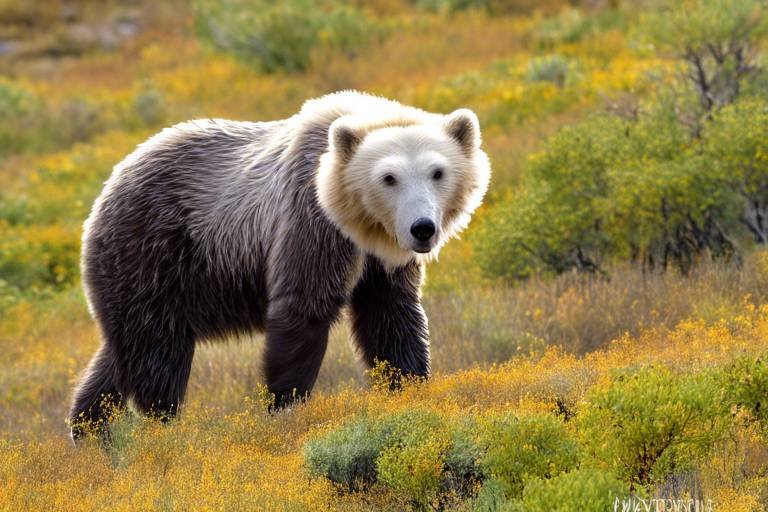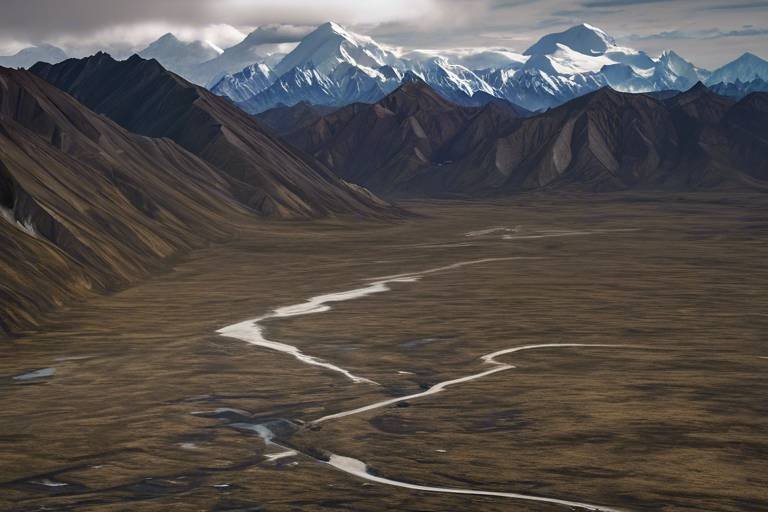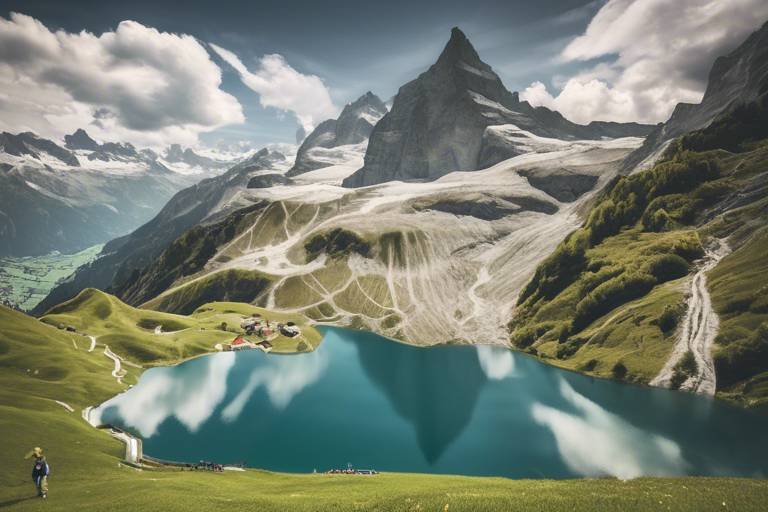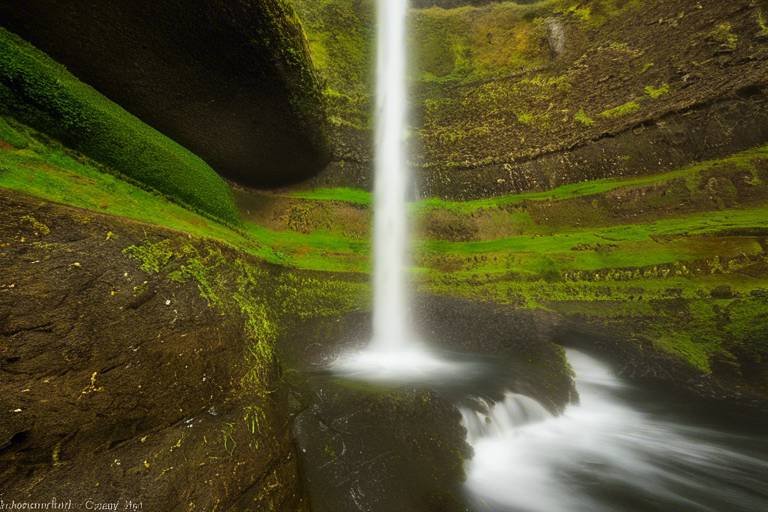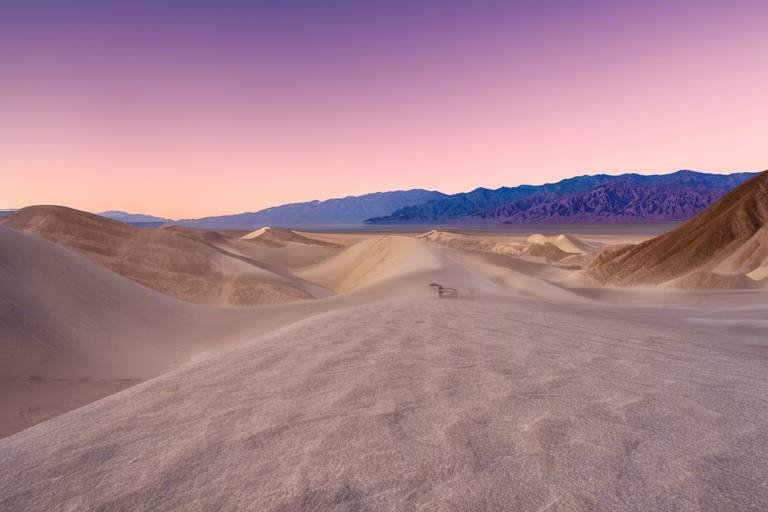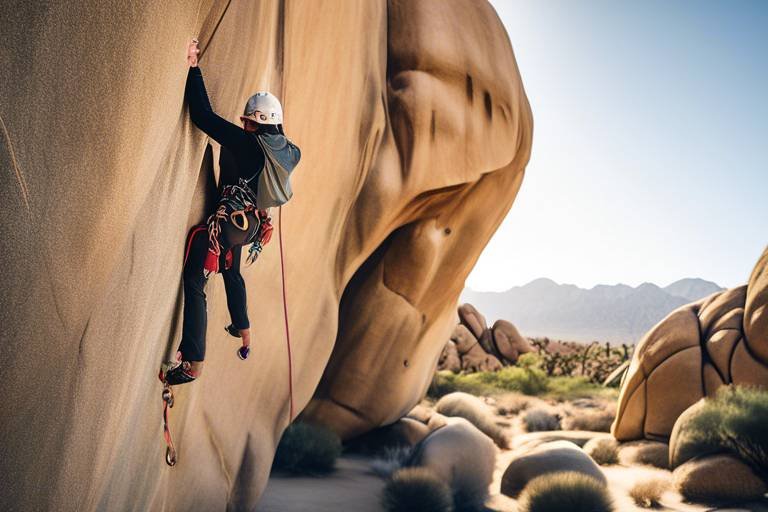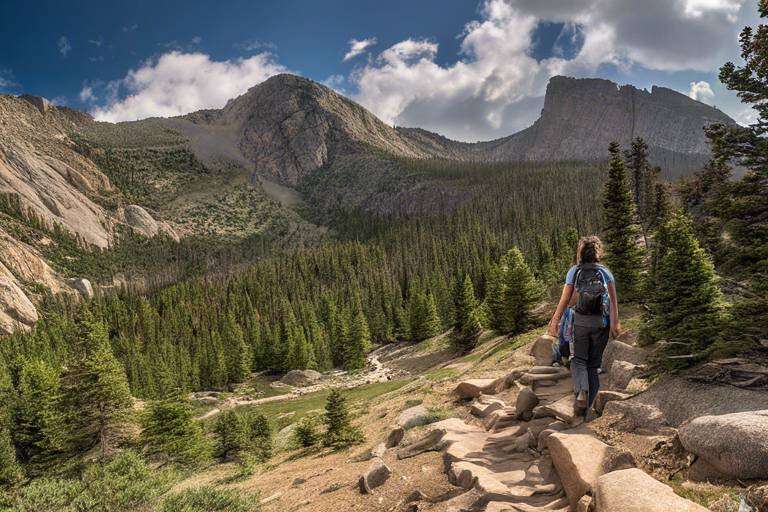The Best Spots for Wildlife Photography in Yellowstone
Are you ready to embark on a thrilling wildlife photography adventure in Yellowstone National Park? Known for its diverse ecosystems and iconic wildlife, Yellowstone offers a plethora of opportunities for capturing stunning images that will leave you in awe. From the majestic bison to the elusive wolves, the park is a paradise for nature photographers seeking to capture the beauty of the wild.
One of the top spots for wildlife photography in Yellowstone is the Lamar Valley, often referred to as the Serengeti of North America. Here, you can witness wolves, bison, elk, and bears roaming freely in their natural habitat, set against a backdrop of sweeping landscapes that will take your breath away. The valley's vast expanse provides ample opportunities to capture intimate moments of these magnificent creatures in their element.
For those looking to photograph large bison herds and a variety of bird species, Hayden Valley is a must-visit location. Situated along the Yellowstone River, this valley offers a chance to witness wildlife interactions and stunning scenery that will elevate your photography skills to new heights. Keep your camera ready to capture the dynamic wildlife scenes that unfold before your eyes.
Another unique photography opportunity can be found in the Old Faithful area, where geothermal features meet wildlife sightings. Here, you can capture images of animals such as bison and elk against the iconic backdrop of geysers and hot springs, creating a juxtaposition of nature's raw power and beauty in a single frame.
For a truly breathtaking experience, head to the Grand Canyon of the Yellowstone to photograph the majestic Yellowstone River as it cascades through the canyon. Keep an eye out for bighorn sheep and osprey soaring overhead, adding a sense of drama and scale to your wildlife photography portfolio.
Mount Washburn offers a different perspective for wildlife photography enthusiasts, with panoramic views of the park and the chance to photograph mountain goats, bighorn sheep, and birds of prey in their alpine habitat. The challenging hike to the summit is well worth the effort for the unparalleled photo opportunities that await at the top.
Yellowstone Lake, the largest high-elevation lake in North America, provides a serene setting for capturing a variety of waterfowl, otters, and even grizzly bears along its shores. The reflective waters of the lake offer a unique backdrop for your wildlife photographs, creating a sense of tranquility and harmony in each shot.
For a more secluded wildlife photography experience, take a drive along Blacktail Plateau Drive to encounter black bears, wolves, and elk in a less crowded area of the park. The sweeping views of the surrounding wilderness will transport you into a world where nature reigns supreme, allowing you to focus on capturing the untamed beauty of Yellowstone.
The Madison River Area beckons photographers with its scenic beauty and diverse wildlife, including bald eagles, osprey, and otters. The soft morning or evening light along the river enhances the natural beauty of the surroundings, creating a magical atmosphere for capturing stunning wildlife photographs that tell a story of life along the river.
Lastly, immerse yourself in the otherworldly landscapes of Norris Geyser Basin, where geothermal features blend seamlessly with wildlife sightings. Elk and bison roam amidst the colorful hot springs and steam vents, offering a unique blend of natural wonders that will challenge your creativity as a wildlife photographer.

Lamar Valley
Explore the top locations in Yellowstone National Park to capture stunning wildlife photographs, including tips on when and where to find iconic animals such as bears, wolves, elk, and bison.
Known as the Serengeti of North America, Lamar Valley offers excellent opportunities to photograph wolves, bison, elk, and bears in their natural habitat against a backdrop of picturesque landscapes. The valley's vast meadows and rolling hills provide a perfect setting for capturing wildlife interactions and behaviors. Whether it's a pack of wolves on the hunt or a majestic bison grazing peacefully, Lamar Valley offers a true wilderness experience for wildlife photographers.
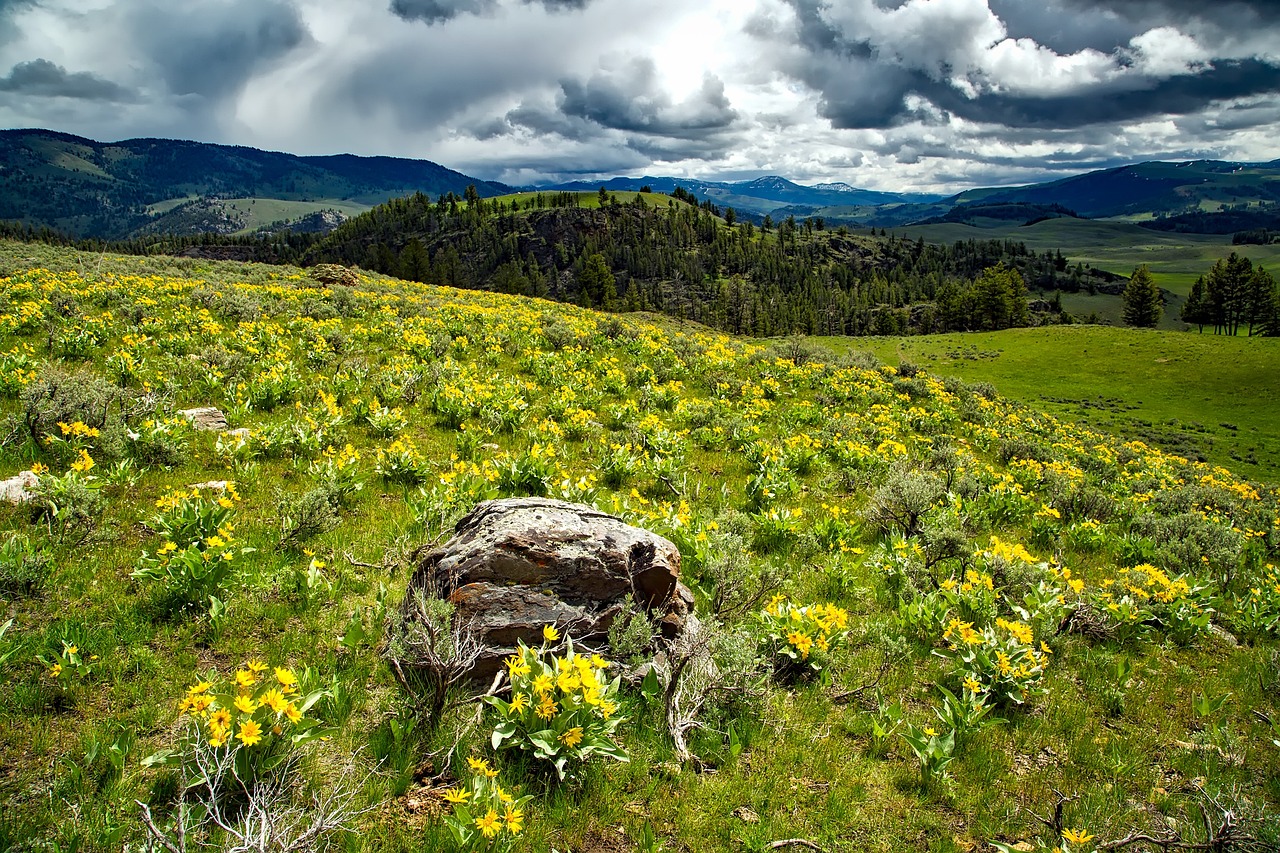
Serengeti of North America,
The Lamar Valley in Yellowstone National Park has earned the nickname "Serengeti of North America" for a good reason. Just like the vast savannas of Africa teeming with diverse wildlife, Lamar Valley offers a similar spectacle in the heart of North America. Picture this: expansive grasslands stretching as far as the eye can see, dotted with herds of bison grazing peacefully, wolves prowling in search of prey, elk bugling in the distance, and bears foraging for food. It's a wildlife photographer's paradise, where every corner holds the promise of a breathtaking shot.
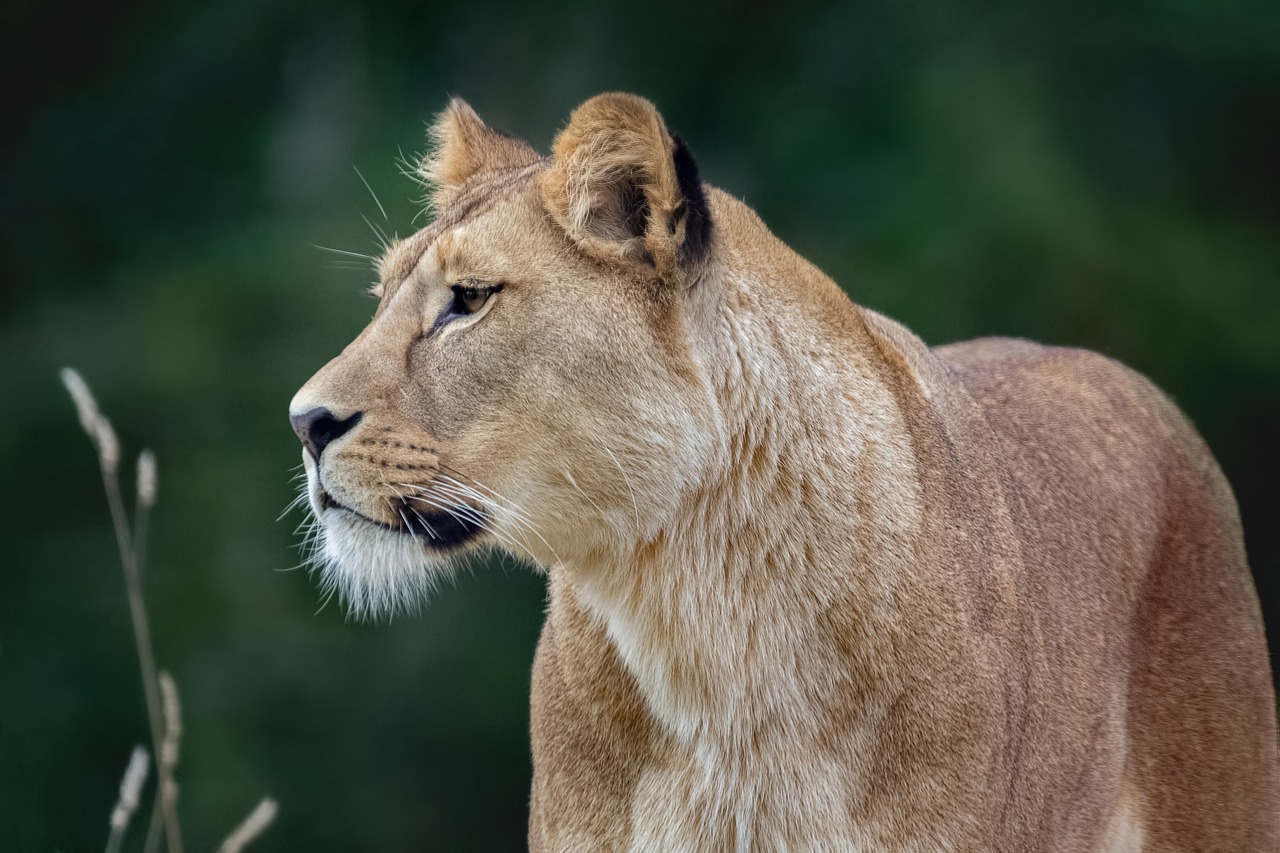
Lamar Valley offers excellent opportunities to photograph wolves, bison, elk, and bears in their natural habitat against a backdrop of picturesque landscapes.
Explore the top locations in Yellowstone National Park to capture stunning wildlife photographs, including tips on when and where to find iconic animals such as bears, wolves, elk, and bison.
Lamar Valley is known as the Serengeti of North America, offering excellent opportunities to photograph wolves, bison, elk, and bears in their natural habitat against a backdrop of picturesque landscapes. The vast open space and diverse wildlife make it a prime location for capturing stunning images that truly showcase the beauty of Yellowstone.
Famous for its large bison herds and diverse bird species, Hayden Valley provides photographers with the chance to capture wildlife interactions and stunning scenery along the Yellowstone River. The dynamic ecosystem of Hayden Valley offers a rich tapestry of wildlife and natural beauty that is sure to inspire any photographer.
Combining geothermal features with wildlife sightings, the Old Faithful area offers unique photo opportunities of animals like bison and elk against the backdrop of iconic geysers and hot springs. This juxtaposition of natural elements creates a visually striking setting for capturing the essence of Yellowstone's unique landscape.
Capture breathtaking images of the Yellowstone River cascading through the canyon while keeping an eye out for wildlife such as bighorn sheep and osprey soaring overhead. The dramatic cliffs and roaring river provide a dramatic backdrop for wildlife photography, creating a sense of awe and wonder in every shot.
Hike to the summit of Mount Washburn for panoramic views of the park and the chance to photograph mountain goats, bighorn sheep, and birds of prey in their alpine habitat. The elevated vantage point offers a unique perspective for capturing wildlife in their natural environment against the backdrop of the expansive Yellowstone landscape.
Photograph a variety of waterfowl, otters, and even grizzly bears along the shores of Yellowstone Lake, the largest high-elevation lake in North America, offering stunning reflections and diverse wildlife. The tranquil waters and abundant wildlife make Yellowstone Lake a photographer's paradise, with endless opportunities for capturing the beauty of nature.
Take a scenic drive along Blacktail Plateau for opportunities to photograph black bears, wolves, and elk in a less crowded area of the park, with sweeping views of the surrounding wilderness. The secluded nature of Blacktail Plateau Drive provides a peaceful setting for capturing intimate moments of wildlife in their natural habitat.
Visit the Madison River for chances to photograph bald eagles, osprey, and otters against the backdrop of the river's scenic beauty, especially during the early morning or late afternoon light. The tranquil setting of the Madison River offers a serene environment for capturing the grace and elegance of various bird species in flight.
Combine the otherworldly landscapes of Norris Geyser Basin with wildlife photography opportunities, including elk and bison, for a unique blend of geothermal features and animal sightings in Yellowstone National Park. The juxtaposition of steaming geysers and roaming wildlife creates a surreal and captivating setting for capturing the essence of Yellowstone's diverse ecosystem.
Q: What is the best time of year to visit Yellowstone for wildlife photography?
A: The best time for wildlife photography in Yellowstone is during the spring and fall seasons when animals are more active and the landscapes are vibrant with color.
Q: Are there any specific photography regulations in Yellowstone National Park?
A: Yes, visitors are required to follow guidelines to ensure the safety of both wildlife and themselves. It is important to maintain a safe distance from animals and to respect their natural behavior.
Q: What equipment is recommended for wildlife photography in Yellowstone?
A: A telephoto lens, tripod, and camera with fast autofocus capabilities are essential for capturing wildlife in their natural habitat. Additionally, carrying extra batteries and memory cards is advisable for extended photography sessions.
Q: Can I join guided photography tours in Yellowstone?
A: Yes, there are various guided photography tours available in Yellowstone National Park that cater to photographers of all skill levels. These tours provide expert guidance on capturing the best wildlife shots and navigating the park's diverse landscapes.
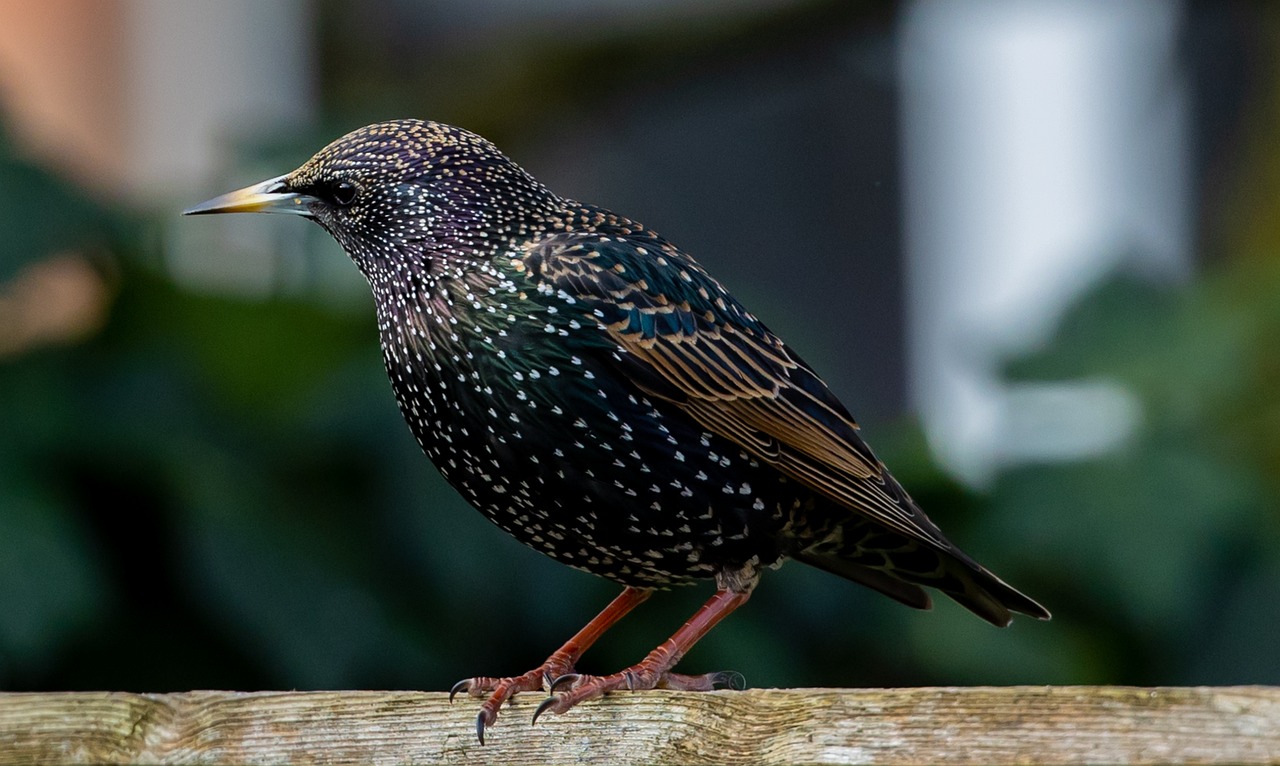
Hayden Valley
Explore the top locations in Yellowstone National Park to capture stunning wildlife photographs, including tips on when and where to find iconic animals such as bears, wolves, elk, and bison.
Known as the Serengeti of North America, Lamar Valley offers excellent opportunities to photograph wolves, bison, elk, and bears in their natural habitat against a backdrop of picturesque landscapes.
Famous for its large bison herds and diverse bird species, Hayden Valley provides photographers with the chance to capture wildlife interactions and stunning scenery along the Yellowstone River.
Combining geothermal features with wildlife sightings, the Old Faithful area offers unique photo opportunities of animals like bison and elk against the backdrop of iconic geysers and hot springs.
Capture breathtaking images of the Yellowstone River cascading through the canyon while keeping an eye out for wildlife such as bighorn sheep and osprey soaring overhead.
Hike to the summit of Mount Washburn for panoramic views of the park and the chance to photograph mountain goats, bighorn sheep, and birds of prey in their alpine habitat.
Photograph a variety of waterfowl, otters, and even grizzly bears along the shores of Yellowstone Lake, the largest high-elevation lake in North America, offering stunning reflections and diverse wildlife.
Take a scenic drive along Blacktail Plateau for opportunities to photograph black bears, wolves, and elk in a less crowded area of the park, with sweeping views of the surrounding wilderness.
Visit the Madison River for chances to photograph bald eagles, osprey, and otters against the backdrop of the river's scenic beauty, especially during the early morning or late afternoon light.
Combine the otherworldly landscapes of Norris Geyser Basin with wildlife photography opportunities, including elk and bison, for a unique blend of geothermal features and animal sightings in Yellowstone National Park.
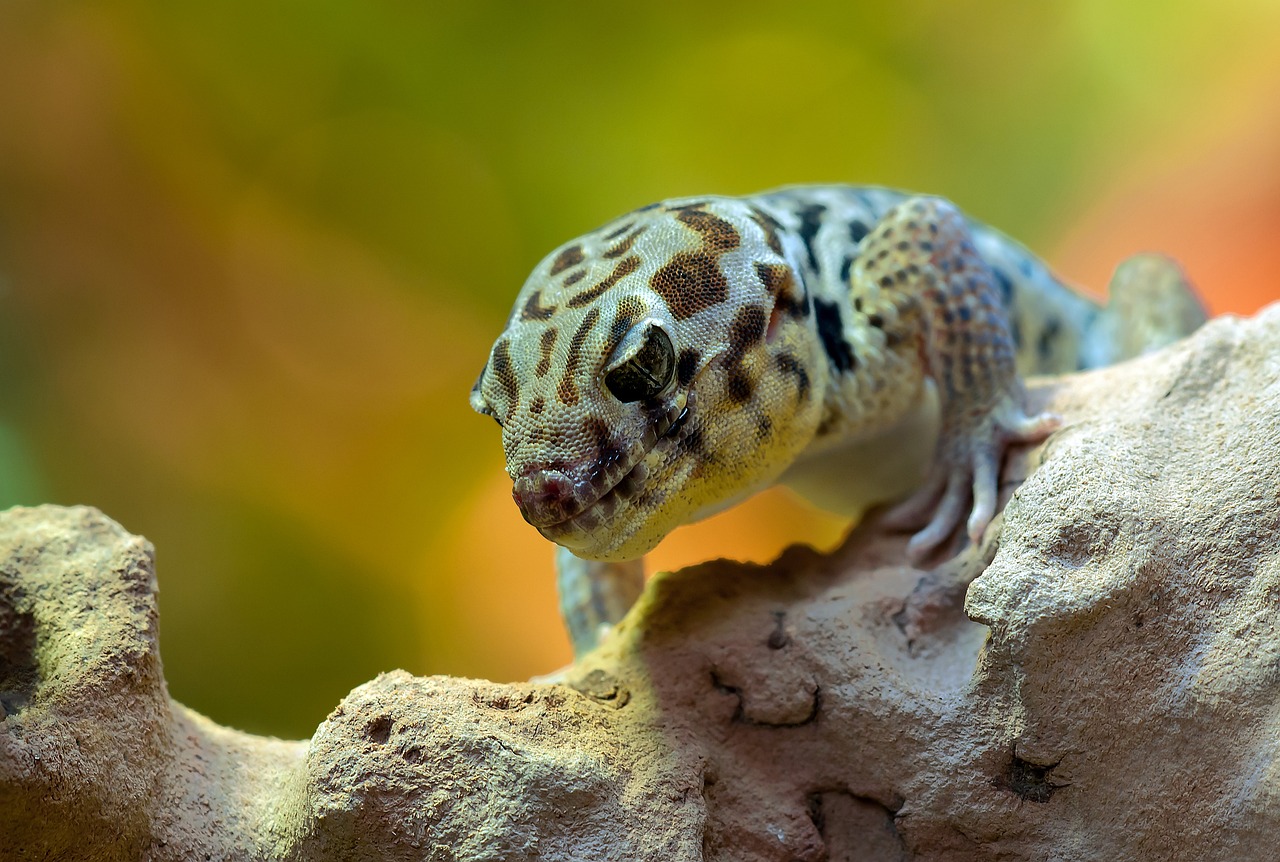
Old Faithful Area
The Old Faithful area in Yellowstone National Park is a unique blend of geothermal wonders and abundant wildlife, making it a prime spot for wildlife photography enthusiasts. Here, you can capture mesmerizing images of iconic animals such as bison and elk against the backdrop of the park's famous geysers and hot springs. Imagine the thrill of photographing a majestic elk grazing near the erupting Old Faithful geyser, creating a juxtaposition of nature's raw power and serene beauty.
As you explore the Old Faithful area, keep your camera ready for unexpected moments of wildlife encounters amidst the steamy geothermal features. The contrast between the vibrant greenery and the colorful mineral deposits around the geysers provides a stunning setting for your wildlife photographs. Picture a bison peacefully grazing near a bubbling hot spring, showcasing the harmonious coexistence of wildlife and geothermal activity.
For the best lighting conditions, consider visiting the Old Faithful area during the early morning or late afternoon when the sun casts a warm glow over the landscape, enhancing the colors and textures in your photographs. The interplay of light and shadow adds depth and dimension to your wildlife shots, creating a captivating visual narrative of life in Yellowstone.
Don't miss the opportunity to capture the dynamic interactions between animals and their surroundings in the Old Faithful area. Whether it's a playful otter diving into a crystal-clear pool or a group of elk grazing near a steaming thermal feature, each moment presents a unique photo opportunity that tells a story of the park's rich biodiversity.
Immerse yourself in the natural wonders of the Old Faithful area and let your creativity soar as you frame the beauty of Yellowstone's wildlife against the backdrop of its geothermal treasures. With patience and a keen eye for detail, you can create stunning wildlife photographs that capture the essence of this iconic national park.
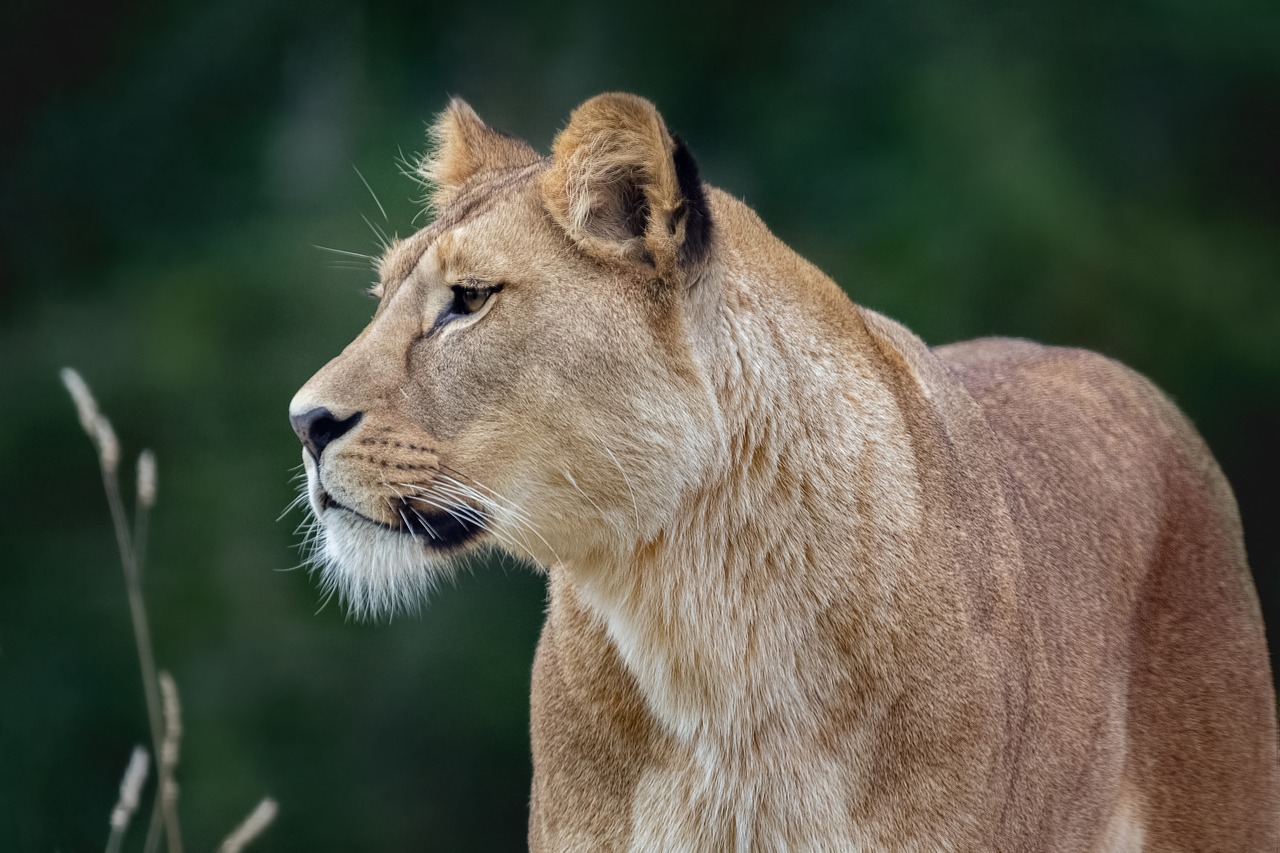
Grand Canyon of the Yellowstone
Capturing the essence of the through your camera lens is a mesmerizing experience that combines the raw beauty of nature with the thrill of wildlife photography. As you stand at the edge of the canyon, the roaring Yellowstone River slicing through the rugged terrain creates a dramatic backdrop for your shots. The canyon walls, painted in hues of yellow, orange, and red by the geothermal activity in the area, offer a striking contrast to the lush greenery that thrives along the riverbanks.
Amidst this awe-inspiring scenery, keep a keen eye out for the diverse wildlife that inhabits the canyon. Bighorn sheep, with their majestic horns, are often seen scaling the steep cliffs, showcasing their agility against the rugged landscape. As you scan the skies above, you may spot osprey circling overhead, their sharp eyes searching for fish in the river below. The canyon's ecosystem provides a rich tapestry for wildlife enthusiasts and photographers alike, offering a glimpse into the natural harmony of Yellowstone.
For photographers seeking to capture the dynamic interplay between wildlife and the environment, the Grand Canyon of the Yellowstone presents endless opportunities. Whether you focus your lens on a soaring osprey against the backdrop of the canyon walls or frame a bighorn sheep silhouetted against the setting sun, each shot tells a unique story of the symbiotic relationship between animals and their habitat.
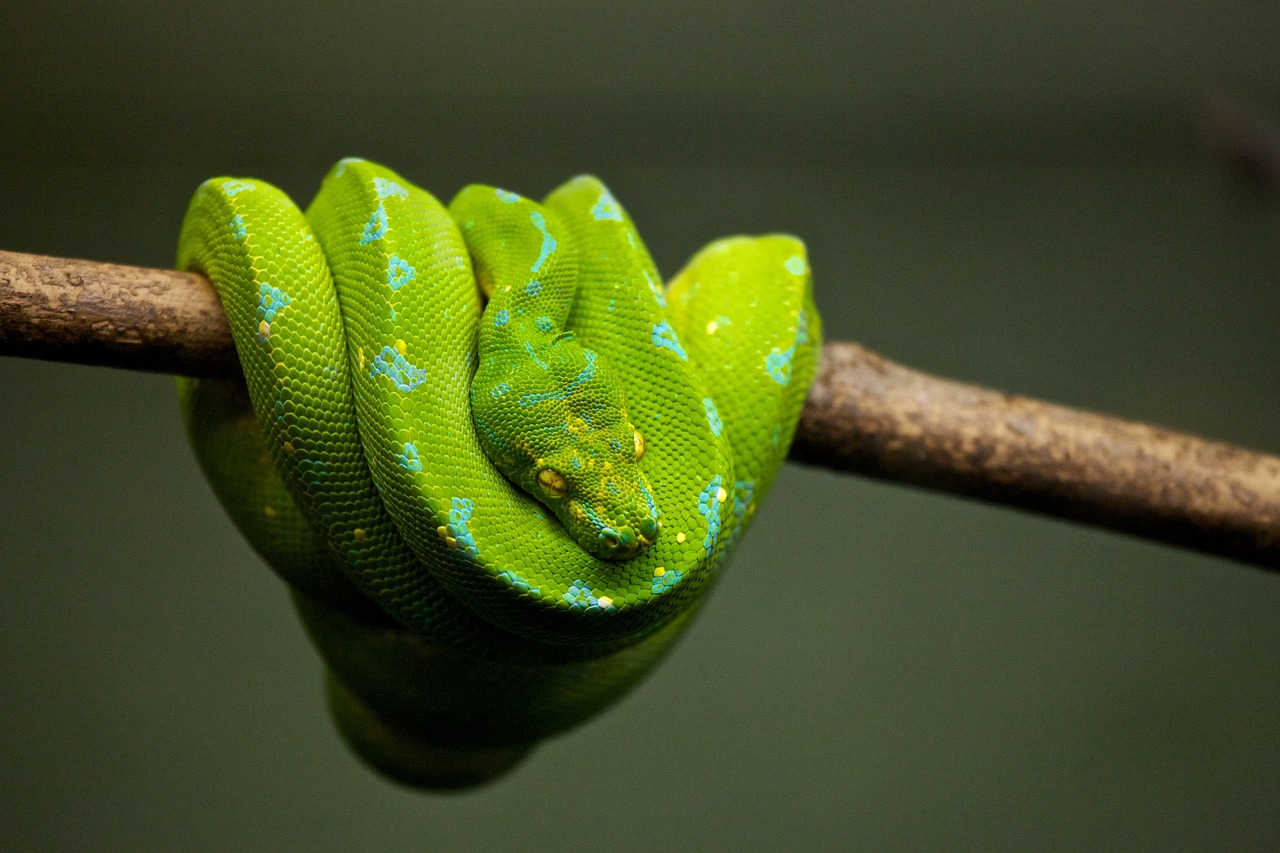
Mount Washburn
Mount Washburn is a must-visit location for wildlife photographers seeking stunning panoramic views of Yellowstone National Park. As you hike to the summit, you'll be greeted with a picturesque landscape that provides the perfect backdrop for capturing the beauty of mountain goats, bighorn sheep, and various birds of prey in their natural alpine habitat. The challenging yet rewarding trek up Mount Washburn offers a unique opportunity to observe and photograph wildlife against the backdrop of the park's diverse ecosystem.
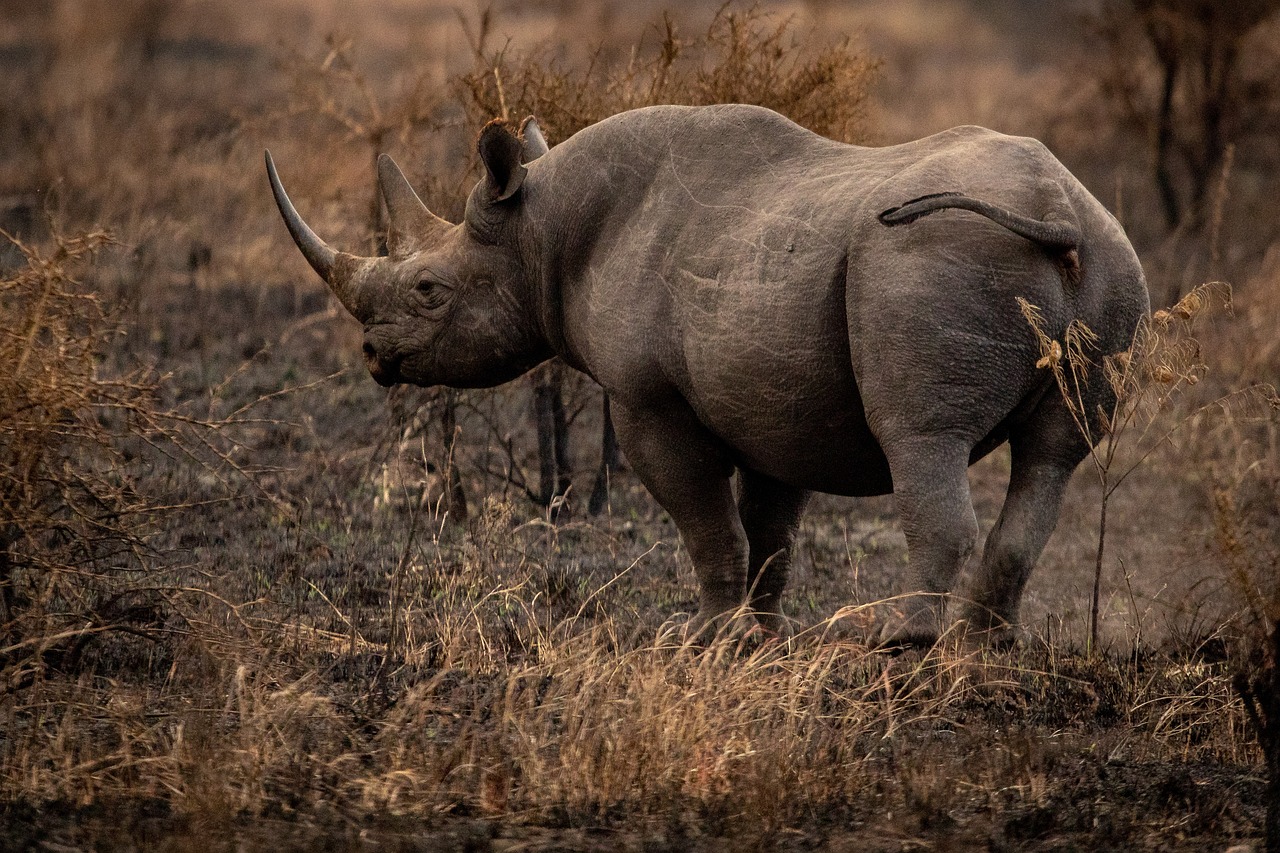
Yellowstone Lake
Yellowstone Lake, the largest high-elevation lake in North America, is a haven for wildlife photographers seeking diverse and stunning subjects. The expansive shores of Yellowstone Lake offer a plethora of opportunities to capture the beauty of nature in its purest form. Whether you are looking to photograph graceful waterfowl gliding across the crystal-clear waters, playful otters frolicking along the shoreline, or majestic grizzly bears fishing for their next meal, Yellowstone Lake provides a picturesque backdrop for your wildlife photography adventures.
One of the highlights of photographing wildlife at Yellowstone Lake is the chance to capture stunning reflections of the surrounding mountains and forests mirrored in the calm waters. The tranquil setting of the lake creates a serene atmosphere that enhances the beauty of your wildlife photographs, adding a sense of peace and harmony to your images. Whether you are an experienced wildlife photographer or a novice enthusiast, Yellowstone Lake offers endless possibilities to hone your skills and capture breathtaking moments in nature.
For those seeking a more adventurous photography experience, exploring the remote bays and inlets of Yellowstone Lake can lead to unexpected encounters with elusive wildlife such as grizzly bears and wolves. These secluded areas provide a unique opportunity to observe wildlife in their natural habitat without the crowds, allowing for intimate and authentic wildlife photography experiences. Whether you prefer the challenge of capturing wildlife in motion or the tranquility of a still life scene, Yellowstone Lake offers a diverse range of subjects to inspire your creativity.
Photographing wildlife at Yellowstone Lake requires patience, dedication, and a keen eye for detail. The ever-changing light conditions, from the soft hues of sunrise to the golden glow of sunset, present unique challenges and opportunities for photographers to experiment with different techniques and compositions. By immersing yourself in the natural beauty of Yellowstone Lake and observing the behavior of its inhabitants, you can capture compelling images that tell a story and evoke emotions in your viewers.
Whether you are drawn to the vibrant colors of a sunrise over Yellowstone Lake, the peaceful serenity of a loon gliding across the water, or the raw power of a grizzly bear emerging from the forest, Yellowstone Lake offers endless possibilities for wildlife photography enthusiasts. With its diverse array of wildlife, stunning landscapes, and unique photographic opportunities, Yellowstone Lake is a must-visit destination for anyone passionate about capturing the beauty of nature through the lens of a camera.
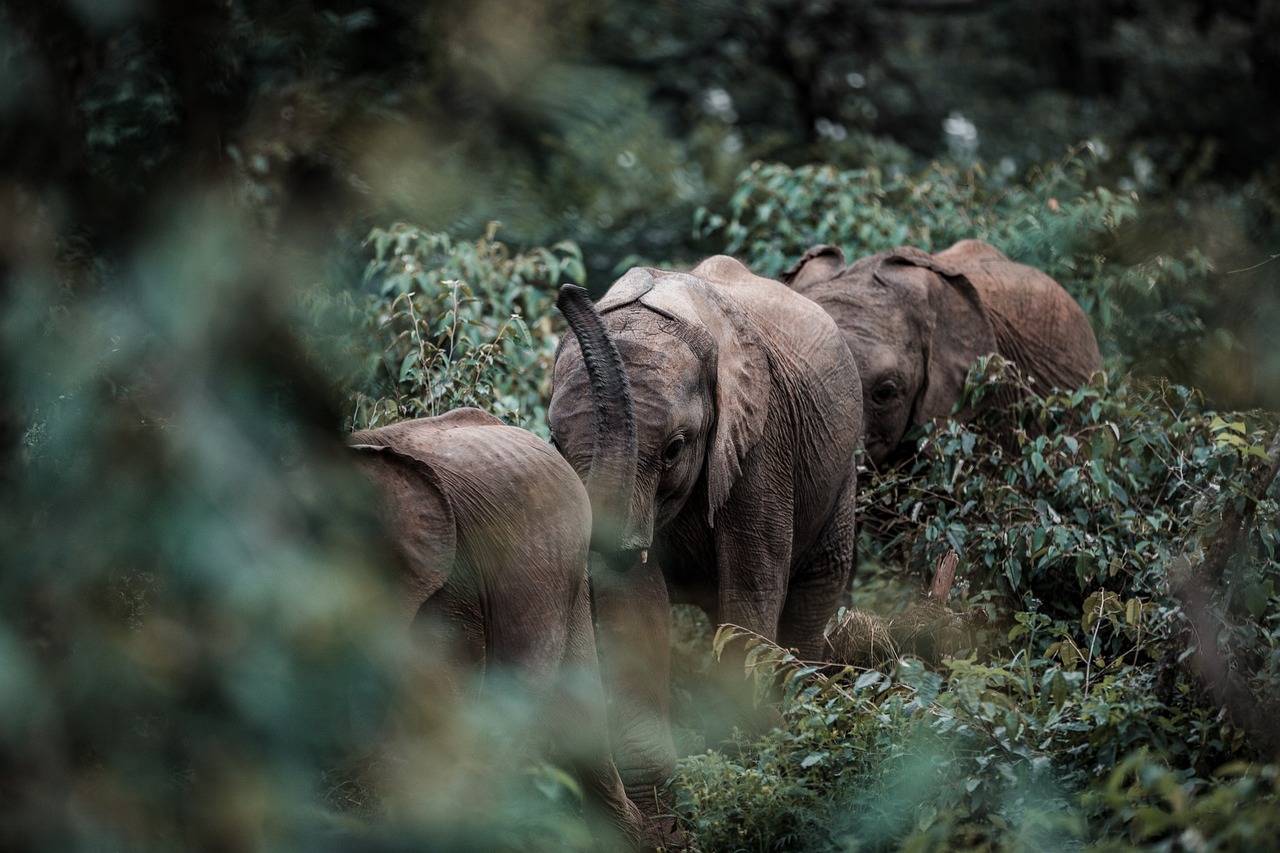
Blacktail Plateau Drive
Embark on a scenic drive along Blacktail Plateau for a truly immersive wildlife photography experience in Yellowstone National Park. This lesser-known area offers a peaceful retreat away from the crowds, allowing you to focus on capturing the beauty of nature without distractions. As you meander through the drive, keep your camera ready for potential sightings of black bears, wolves, and elk against the backdrop of the park's stunning wilderness. The sweeping views of the surrounding landscape provide the perfect setting for photographing these iconic animals in their natural habitat.
Blacktail Plateau Drive is a hidden gem for photographers seeking unique and intimate wildlife encounters. The tranquility of this area allows you to observe and photograph the animals in a more relaxed setting, enhancing the quality of your images. Whether you are a seasoned wildlife photographer or a beginner looking to hone your skills, the drive offers ample opportunities to capture memorable moments and stunning shots of Yellowstone's diverse wildlife.
During your journey along Blacktail Plateau Drive, take advantage of the varying light conditions throughout the day to experiment with different photography techniques. The changing light can transform the landscape and create dramatic effects in your photos, adding depth and dimension to your wildlife images. Consider the time of day and the angle of the sun to make the most of your photography excursion and maximize the potential for breathtaking shots.
As you navigate the winding roads of Blacktail Plateau, keep a lookout for the subtle movements and behaviors of the wildlife around you. Patience and attentiveness are key when photographing animals in their natural environment, allowing you to anticipate their actions and capture authentic moments. Remember to respect the park's guidelines for wildlife viewing and maintain a safe distance while photographing the animals to ensure both their well-being and your own safety.
Blacktail Plateau Drive offers a peaceful retreat and a haven for wildlife photographers seeking to immerse themselves in the beauty of Yellowstone's natural landscapes. Whether you are seeking to capture the majesty of a black bear, the grace of a wolf, or the elegance of an elk, this scenic drive provides the perfect backdrop for your wildlife photography adventures. Take your time, soak in the serenity of the surroundings, and let your creativity flow as you embark on a photographic journey through the heart of Yellowstone National Park.
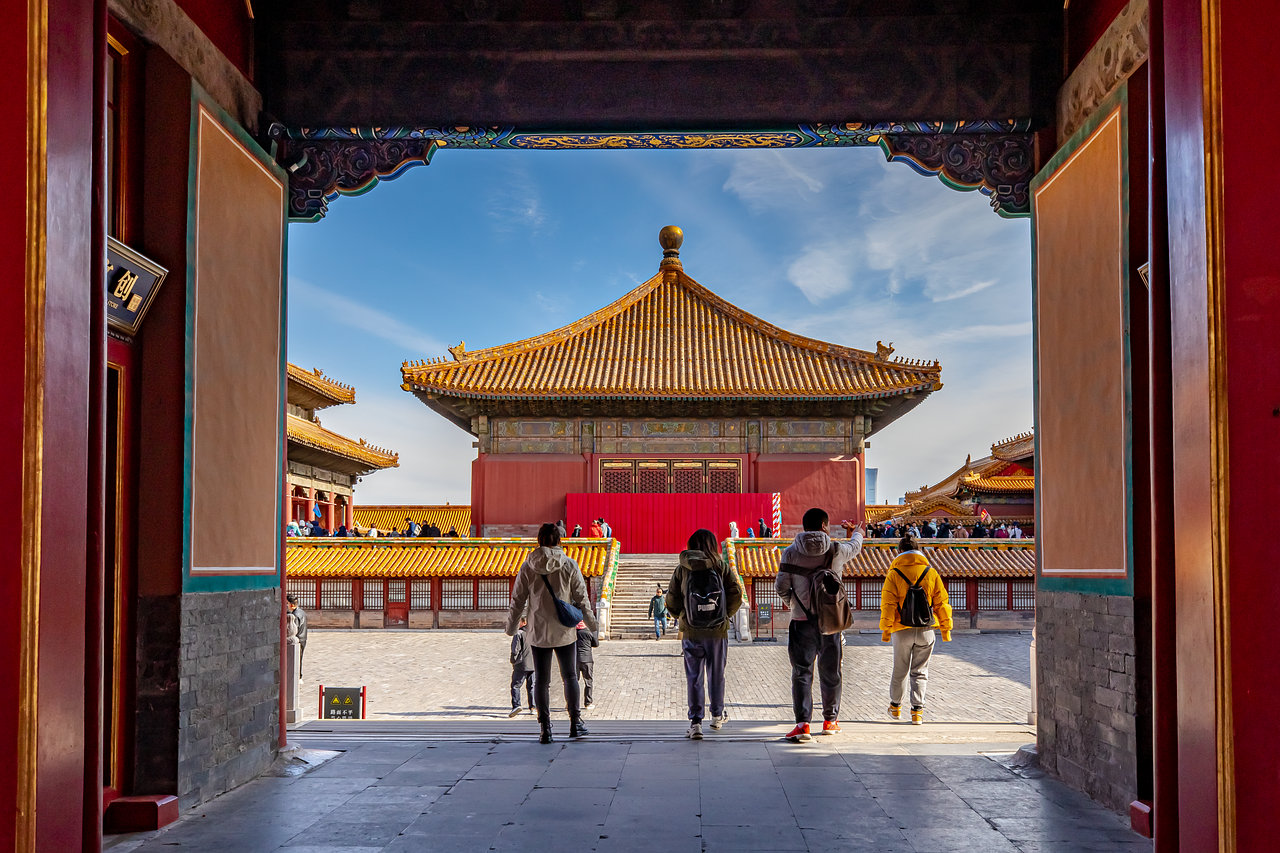
Madison River Area
The Madison River Area in Yellowstone National Park is a haven for wildlife photographers seeking to capture the beauty of nature in its purest form. This picturesque region offers a serene setting along the Madison River, where bald eagles, osprey, and otters gracefully interact with the surrounding landscape. The soft glow of early morning or the warm hues of late afternoon light create the perfect ambiance for capturing stunning images of these majestic creatures against the backdrop of the river's tranquil waters.
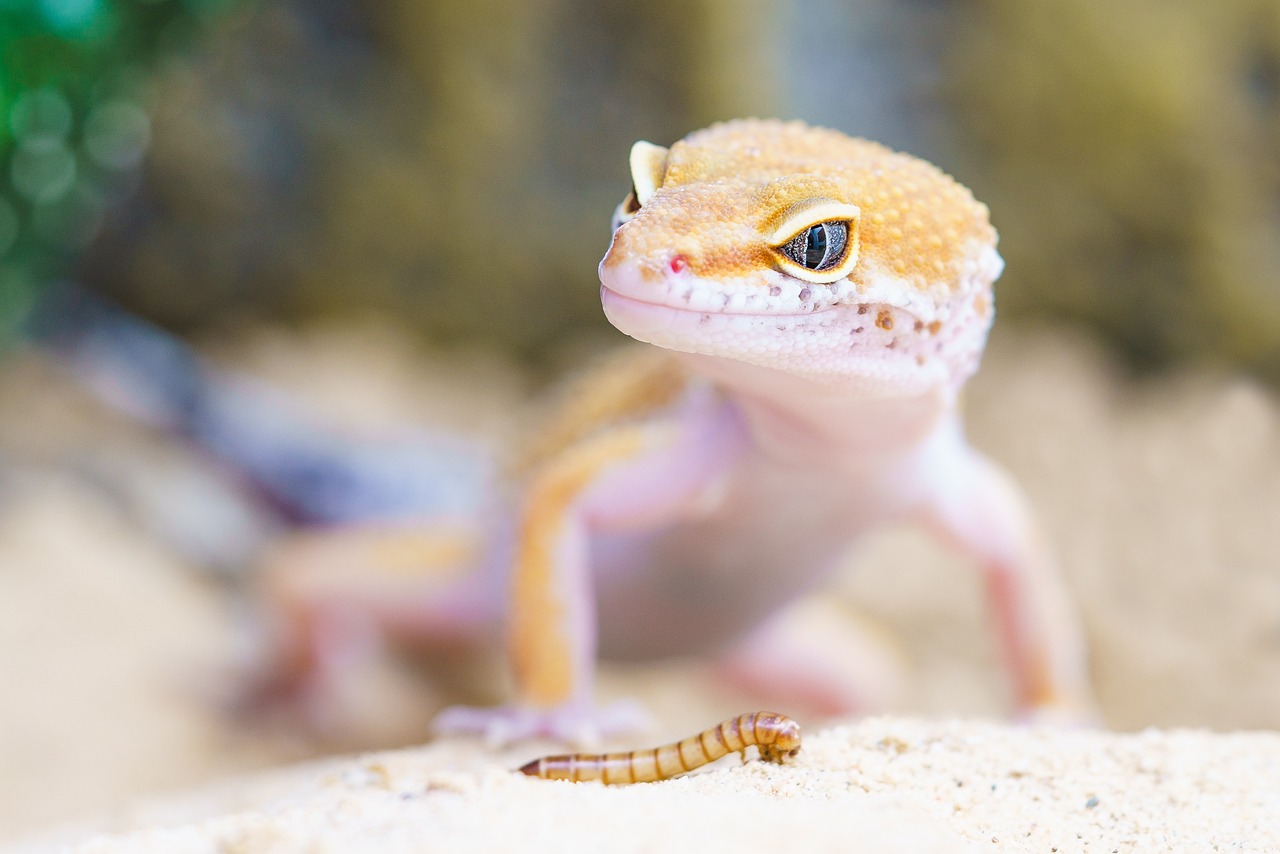
Norris Geyser Basin
When it comes to exploring the wonders of Yellowstone National Park, the Norris Geyser Basin stands out as a unique and captivating destination for wildlife photography enthusiasts. This area seamlessly blends the surreal landscapes of geothermal features with the opportunity to capture iconic animals in their natural habitat. As you wander through the basin, you may encounter majestic elk grazing near bubbling hot springs or spot a bison peacefully roaming amidst the steam vents and colorful pools.
Photographing wildlife against the backdrop of the otherworldly geothermal activity in Norris Geyser Basin creates a striking contrast that adds depth and intrigue to your images. Imagine capturing a bison silhouetted against a backdrop of steam rising from a geyser, or an elk framed by the vibrant hues of a thermal pool. These moments of juxtaposition between the raw power of nature and the grace of wildlife make for truly captivating photographs that tell a story of coexistence and harmony.
One of the unique aspects of photographing wildlife in Norris Geyser Basin is the ever-changing environment that provides a dynamic backdrop for your shots. The shifting colors of the thermal features, the billowing steam, and the constant activity of geysers create a visually stimulating canvas that enhances the drama and beauty of your wildlife images.
Whether you are an experienced wildlife photographer or a novice enthusiast, Norris Geyser Basin offers a wealth of opportunities to hone your craft and capture unforgettable moments in nature. From the intricate patterns of mineral deposits to the graceful movements of elk and bison, every corner of the basin presents a new and exciting subject to photograph.
As you immerse yourself in the unique blend of geothermal wonders and wildlife sightings in Norris Geyser Basin, remember to respect the park's regulations and guidelines for wildlife photography. Keep a safe distance from the animals, avoid disrupting their natural behavior, and always prioritize the well-being of the park's inhabitants while capturing their beauty through your lens.
Frequently Asked Questions
- What type of wildlife can I expect to photograph in Yellowstone National Park?
In Yellowstone National Park, you can expect to photograph a wide variety of wildlife, including iconic animals such as bears, wolves, elk, bison, mountain goats, bighorn sheep, otters, birds of prey, and more. Each location within the park offers unique opportunities to capture these animals in their natural habitats.
- When is the best time to visit Yellowstone for wildlife photography?
The best time to visit Yellowstone for wildlife photography is typically during the spring and fall seasons. Spring offers the chance to capture newborn animals and vibrant landscapes, while fall provides stunning foliage and active wildlife preparing for winter. However, each season in Yellowstone has its own charm and photographic opportunities.
- Are there any specific photography tips for capturing wildlife in Yellowstone?
When photographing wildlife in Yellowstone, it's essential to respect the animals and their natural behaviors. Be patient, use a telephoto lens for close-up shots, and consider the lighting conditions for the best results. Additionally, staying at a safe distance and following park guidelines ensures both your safety and the well-being of the wildlife.




